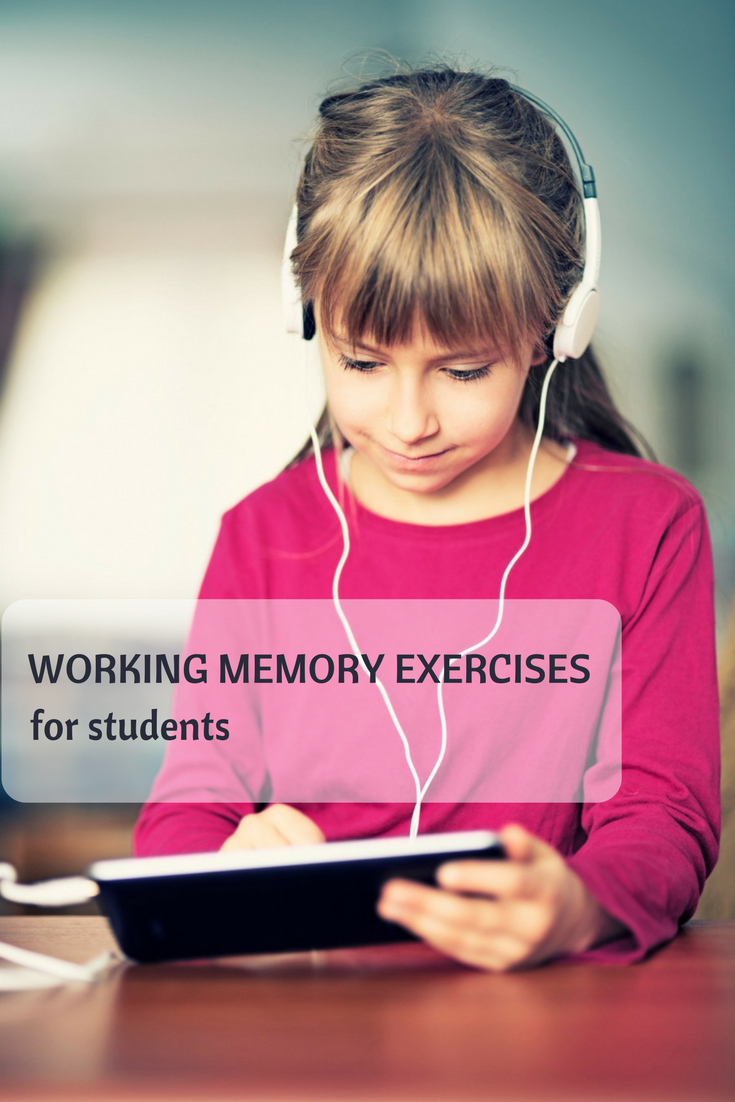Working memory, sometimes called short-term memory, is the part of your brain’s memory capacity that deals with immediate tasks. Remembering directions, where you saved the document you were just typing, or what you said you’d pick up from the store are all tasks that require effective working memory. It’s especially important for kids to develop strong working memory to help with literacy, social skills, and confidence in the classroom.
While some people naturally have more memory capacity than others, practice will lead to improvements. For educators and parents of students, understanding how working memory helps students, and how it can be improved can be incredibly helpful in assisting students to get the most out of their education. Students, who might otherwise fall behind for reasons due to memory, can independently strengthen their working memory and take charge of the difficulty they’re facing in their education.
The research
A Johns Hopkins study into working memory has demonstrated that groups of college students who engage in regular working memory exercises show 30% better retention in working memory than those who engage in the exercises only once, or not at all.
Like exercising a muscle, the above-mentioned research shows working memory requires constant practice. Taxi drivers, for example, perform incredibly well on working and long-term memory tests because they have to remember complex driving directions all day and have enormous amounts of practice exercising their memories while driving.
Working memory and school skills
Memory skills are important for school-age kids for many reasons. First, in language acquisition while kids are learning to read and write, rote memorization of spelling and grammar rely on memory. Although language memory eventually becomes long term, using new words and pronouncing unfamiliar sounds depend on working memory to make use of new techniques and manipulate language as it is being learned.
Many classes in school also rely on a combination of memory and critical thinking. Flashcards, practice tests, and traditional study methods often rely on memory skills, but don’t necessarily encourage the brain to improve its memory capacity. Just a few minutes of memory exercises a day can improve a student’s ability to retain information gathered in a traditional classroom environment, or for newer online methods of delivering education.
Benefits for students
Good working memory can also help students improve their focus in a classroom. Having a reliable memory can help students feel more confident, and this confidence allows them to give their full attention to a task.
Students who feel as though they can’t remember things and lack confidence often struggle to commit to projects because they feel as though they’ll fail no matter how hard they try. Improving working memory can help students focus because they’re able to commit their whole mind to learning and don’t have any insecurity about making their best effort.
In a learning environment, memory doesn’t just serve in learning for classes and homework assignments. Memory is important for time management, accountability, and social skills which are all critical parts of getting the most out of an education. Particularly reliant on working memory is the ability to retain and follow directions, a crucial skill children learn in school.
Working memory exercises for students
Plenty of online tools exist to challenge your working memory through games and puzzles, but there are also simple everyday ways to build working memory practice into games, homework, or even a car trip with your kids. When driving, have your child read out a licence plate and then try to remember the letters and even say them backwards.
Any study method that involves visualization, especially of text or numbers, will improve working memory. Card games are also an easy working memory enhancer. Kids will need to keep the rules of the game in mind, and remember what cards they have in their hand. This is an easy one because it doesn’t feel like work, especially to kids resistant to homework and lessons.
Using working memory optimization tricks is also a good way to help kids build up their brain power and work ethic. Use tricks like ‘chunking’ to break down big tasks into simple, memorable pieces. Then have your kid walk you through a visualization of each step before they begin. For example, break down ‘clean my room’ into gather dirty laundry, put toys in the basket, and make the bed. Then have your kid describe “I’ll gather the clothes by the door and put them in my blue laundry basket until the floor is clean and I can see the red carpet.”
Not only does this enhance their memory by having them remember what tasks need doing, but it also reinforces the instructions and steps by pushing them to take up more space in the working memory as they complete the process. The same visualization technique can be used to help kids break down homework assignments and essays.

Conclusion
Building up the working memory through exercises and awareness is an amazing way to improve focus, confidence, and academic achievement. Whether you’re helping your child remember how to tackle their math problem, or just trying to keep track of all their friends’ names, working memory exercises are simple, cheap and incredibly beneficial.







